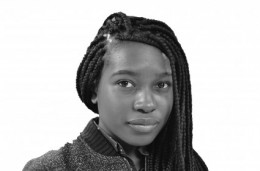
On Nov. 26, a St. Louis County grand jury decided to not indict Darren Wilson for the Aug. 9 shooting of Michael Brown; on Dec. 3, a Staten Island grand jury chose to not indict Officer Daniel Pantaleo for the death of Eric Garner. The circumstances surrounding Michael Brown’s shooting are crystal clear in at least one aspect: An 18-year-old man was shot multiple times by a police officer and left to bleed out in the street. The Garner incident was videotaped, allowing netizens to witness a public servant place a civilian into a chokehold — a technique banned by the NYPD — which eventually resulted in Garner’s death.
In response to these decisions, protests erupted at Binghamton University and across the nation. Newsfeeds buzzed with debates over the validity of the decisions. If anything, you’re probably tired of hearing about these incidents and their aftermath. Don’t be.
These situations are not exceptional, nor are they unique — accounts of police brutality run rampant. Officers are rarely indicted in a court of law and the blood of innocent civilians has been spilled one too many times on American pavement. Only 41 policemen have been charged with murder or manslaughter over the past seven years for killings that occurred while they were on duty. Officers are seldom indicted when cases are brought against them. In response to this pattern, we’ve fixated on two separate but strikingly similar incidents, extending awareness through social media, protests and the increasingly-popular “die-in.”
Incessant media coverage of these topics encourages a long overdue debate regarding the use of excessive force within the police system. It is important to view these unfortunate events in a larger context. These events are by no means abnormal for a country in which police use “banned” or “excessive” techniques with frequency.
Michael Brown’s shooting and Eric Garner’s death bring up uncomfortable but highly relevant subjects for public discussion. Whether it’s about police brutality or racial tension in the United States, people are talking, and that’s exactly what we need. Discourse and awareness are key for eventual amelioration. It is imperative that we use the national attention given to these incidents as a means to address persistent issues. The prominence of these events gives us the opportunity to examine racial disparities. Knowledge truly is power; awareness on a societal level allows us to instigate change.
The American dream preaches “justice for all,” but accounts of wrongdoing are constantly swept under the table, overlooked, silenced and left to be forgotten. With the right level of awareness, the problematic similarities of these events may finally be addressed and brought to the forefront. Let’s make it happen. Let’s tweet. Let’s protest. Let’s keep talking.


